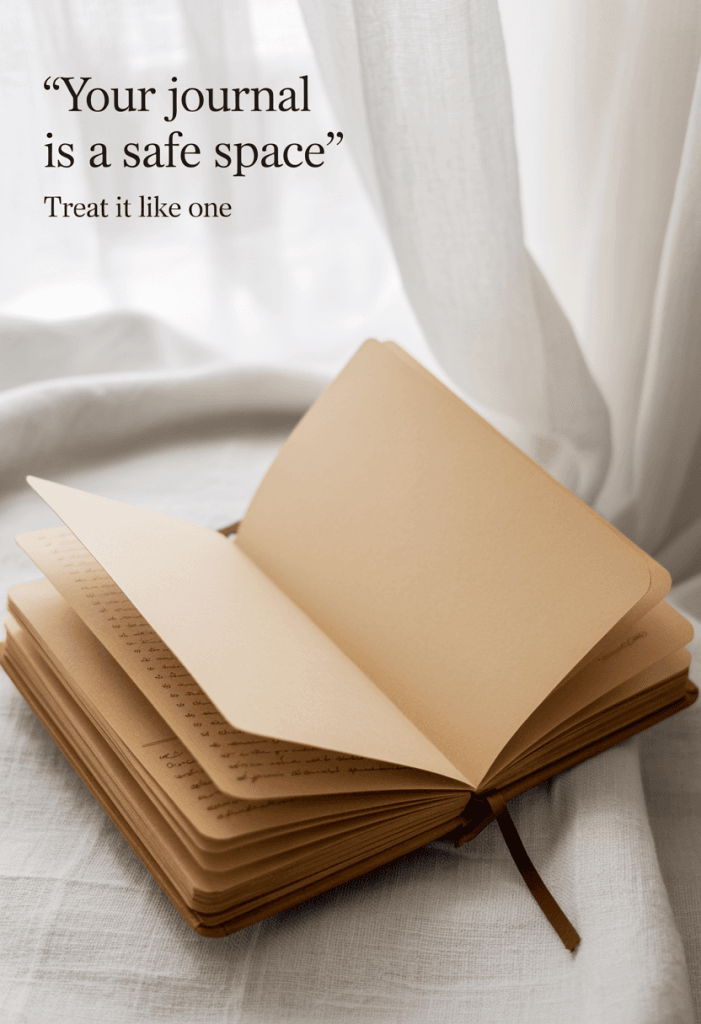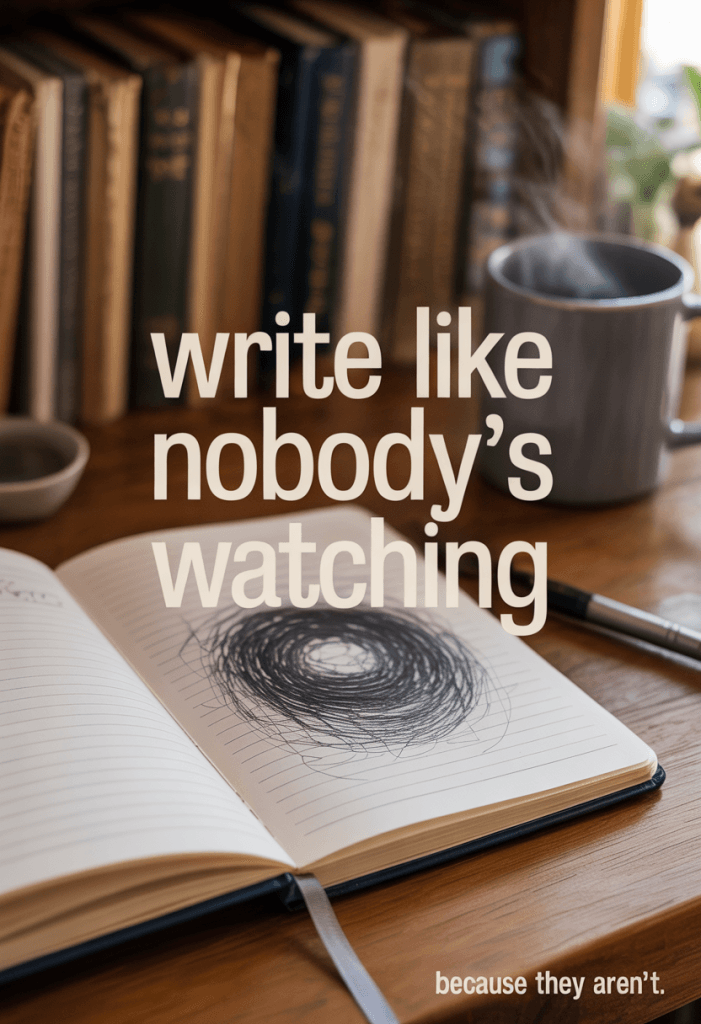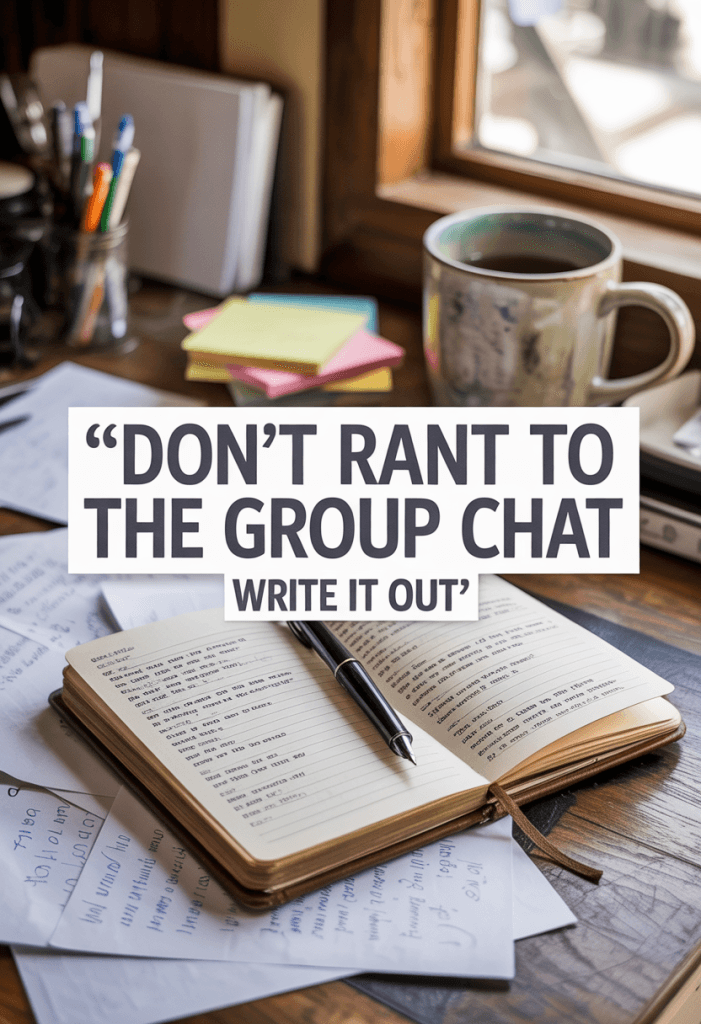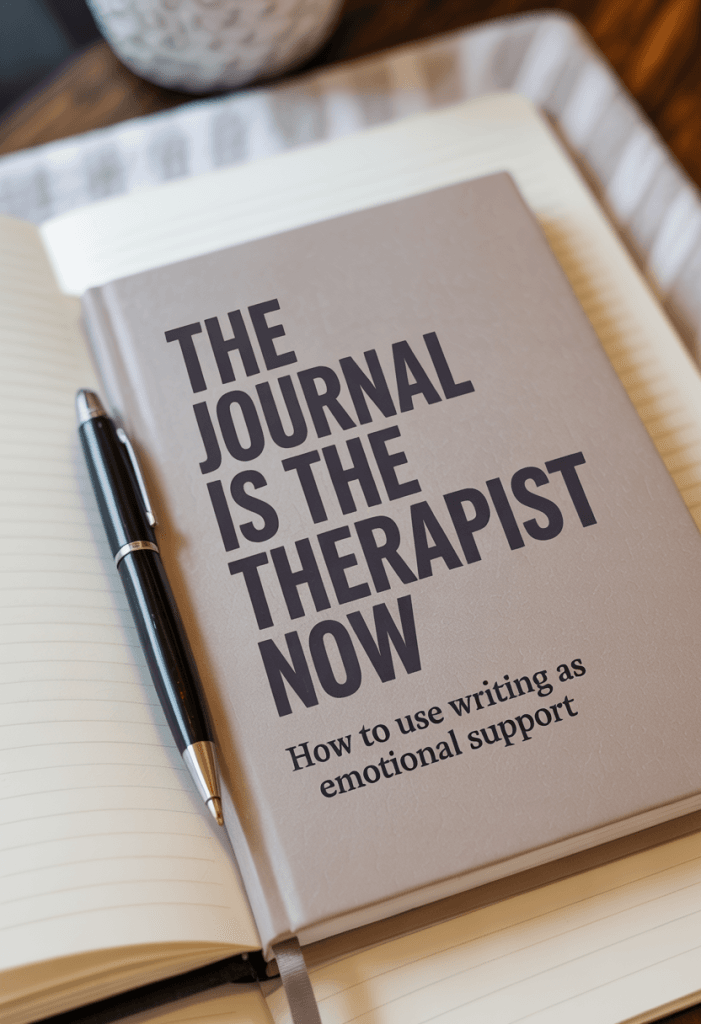You ever hit that moment where everything’s loud—your head, your heart, your inbox—and the group chat’s just not giving? So you do the one thing that always listens: you open your journal. It doesn’t talk back. It doesn’t judge. It just lets you feel it all.
We’re not saying journaling replaces a therapist. It’s not meant to. But for the in-between moments—the 2 AM spirals, the post-argument haze, the days where you just feel off—your journal can be the space you go to unpack it all. The place where your feelings are allowed to just exist.
Here’s how journaling can be your emotional support system, and how to make it feel like a soft place to land.

Why Writing Feels Like a Therapy Session (Sometimes)
Journaling works because it slows your thoughts down just enough to name them. And naming emotions? That’s powerful. It shifts you from overwhelmed to “okay, this is grief” or “yep, that was shame.” You’re not bottling it. You’re holding it, gently.
Journaling:
- Gives your feelings somewhere to live outside your body
- Helps you connect dots you didn’t even realize were there
- Creates a record of your growth—so even when you feel stuck, your pages remind you how far you’ve come
It’s not just venting. It’s processing.
✨ Want to try it in real time? Start with 20 Journaling Prompts for a Low-Motivation Day. They’re low-effort, high-impact, and meet you where you are.

How to Journal Like It’s Your Therapist
No offense to “Dear Diary,” but this kind of journaling hits different. It’s deeper. It’s messier. It’s yours. Try one of these methods next time you’re in your feels:
1. Letter Writing
Write to someone in your life—but don’t send it. Get it all out, raw and unfiltered.
You can also write to:
- Your younger self
- Your future self
- A version of you you’re trying to understand
2. Emotion Check-Ins
Ask:
- What’s loud in my head right now?
- What am I avoiding?
- What emotion keeps coming up this week?
Then let the answers unfold.
3. Dialogue Journaling
It sounds weird but try it:
Write as two versions of you—Current You and Wise You. Let Wise You respond with reassurance, advice, or just “yeah, that sucked.”
4. Shadow Work–Style Prompts
Dig a little deeper with prompts like:
- What’s something I feel ashamed to admit, even to myself?
- What do I need to forgive myself for?
- What story am I still telling myself that keeps me stuck?
Want more? Grab these deep prompts for when you’re in a funk.

Creating a Safe Journaling Space (Physically + Emotionally)
If you’re going to journal like it’s your therapist, you need to feel safe. Here’s how to create that space:
- Choose your setup: Soft lighting, cozy blanket, no distractions
- Set a boundary: This is your time—no judgment, no perfection
- Make it private: Use symbols, write in code, or lock it away if needed
- Burn it or shred it if that feels good: The goal is release, not pressure to reread
And seriously: there’s no “right” way to do this. Bullet points, scribbles, run-on sentences, angry doodles? All valid.
When the Page Isn’t Enough—and That’s Okay
Sometimes, journaling opens the floodgates. That’s a good thing—but also a sign. If what’s coming up feels too big to carry solo, that doesn’t mean you’re failing. It means you’re ready for support beyond the page.
Think of your journal as a stepping stone. A tool. It can help you figure out what you’re feeling, and when it’s time to talk to someone IRL.
You’re not just imagining the benefits. Mental Health America highlights how journaling can help process emotions, reduce stress, and support long-term mental wellbeing.
If you’re curious about expressive writing as a tool for mental health, this Headspace article breaks it down in a simple, non-fluffy way.

Final Thoughts: Let the Page Hold It for a While
You don’t have to have the perfect words. You don’t have to come to a magical breakthrough. You just have to show up to the page. Let it carry what you’ve been holding all day.
Your journal won’t fix you. But it’ll see you. And sometimes, that’s all we need to start healing.
If this kind of journaling speaks to you, check out A Guide to Journaling Without Judging Your Own Thoughts. It’s all about creating space for honesty without shame.
Feeling Too Much? You’re Not Alone.
Journaling can stir up emotions — sometimes the deep, messy kind. And while writing helps, it’s also okay to need more support. You’re not broken. You’re just human.
If things feel heavy or overwhelming, please reach out to someone who can hold that space with you. These helplines are free, confidential, and here when you need them:
- Australia — Beyond Blue at 1300 22 4636
- United States — 988 Suicide & Crisis Lifeline
- United Kingdom & Ireland — Samaritans at 116 123
- Other countries — Befrienders Worldwide or FindAHelpline.com
🛑 If you’re in immediate danger or crisis, always call your country’s emergency services.
Quick Note:
This content is not medical advice. If you’re struggling with your mental health, it’s so valid to ask for help. You deserve support.



